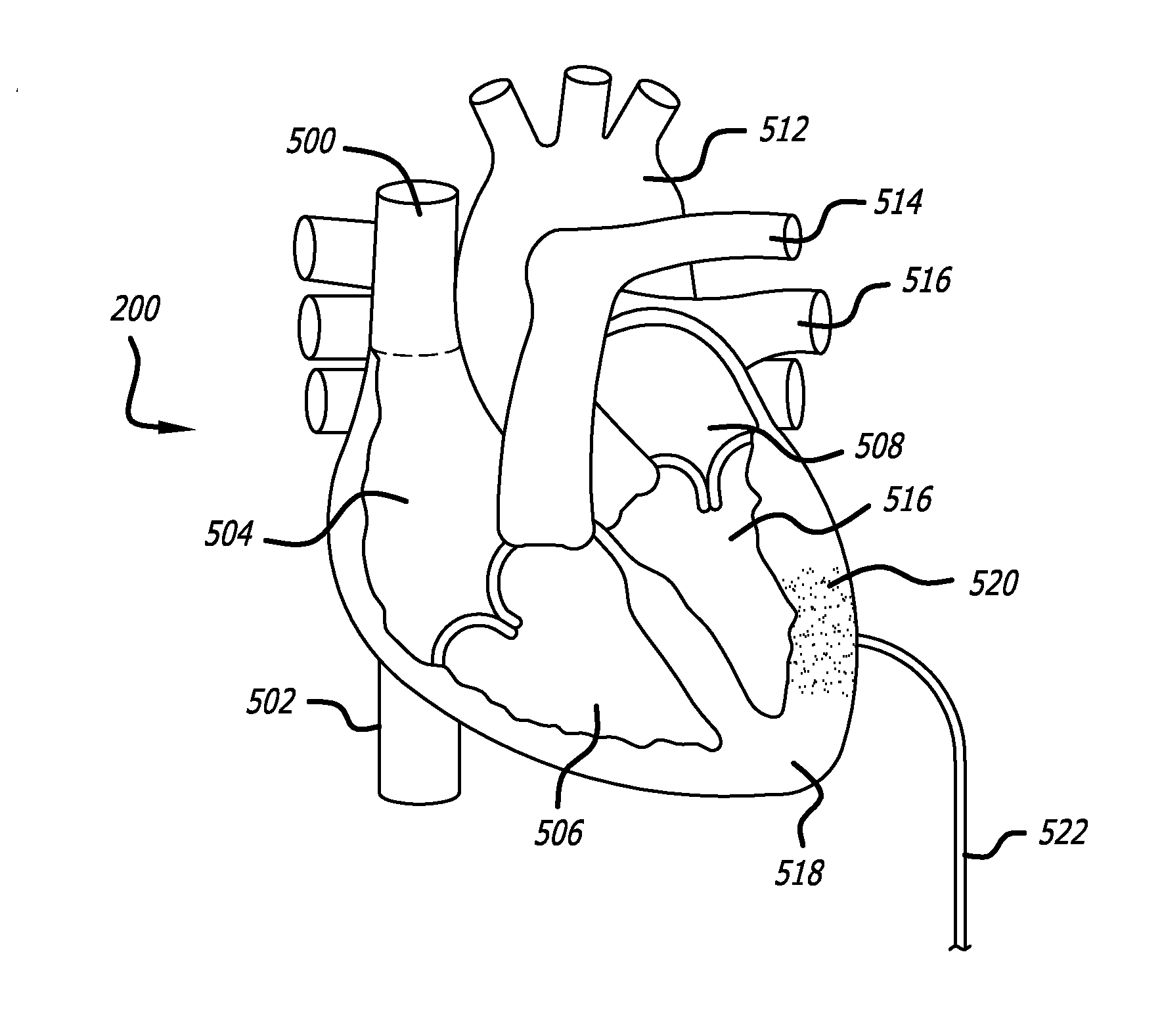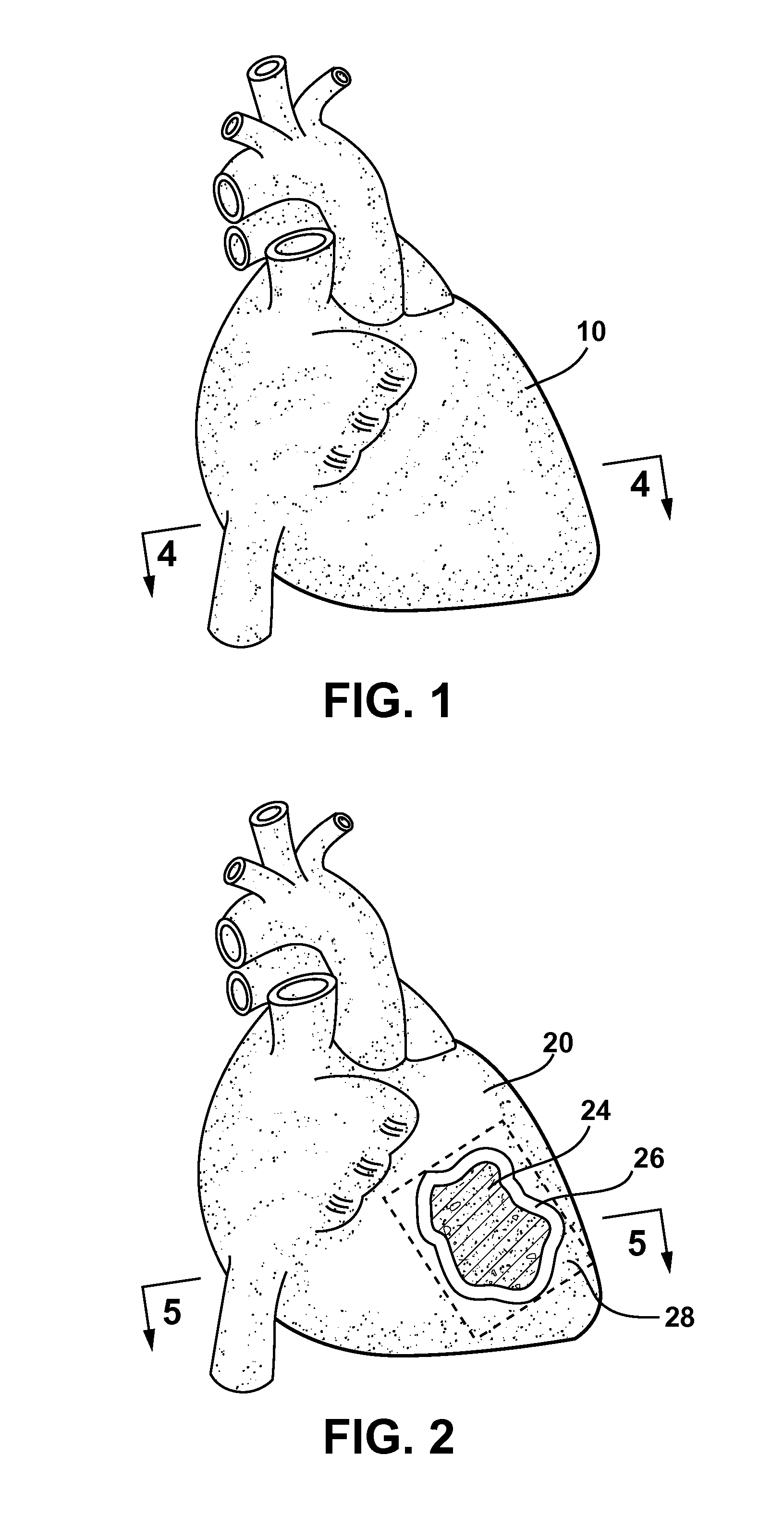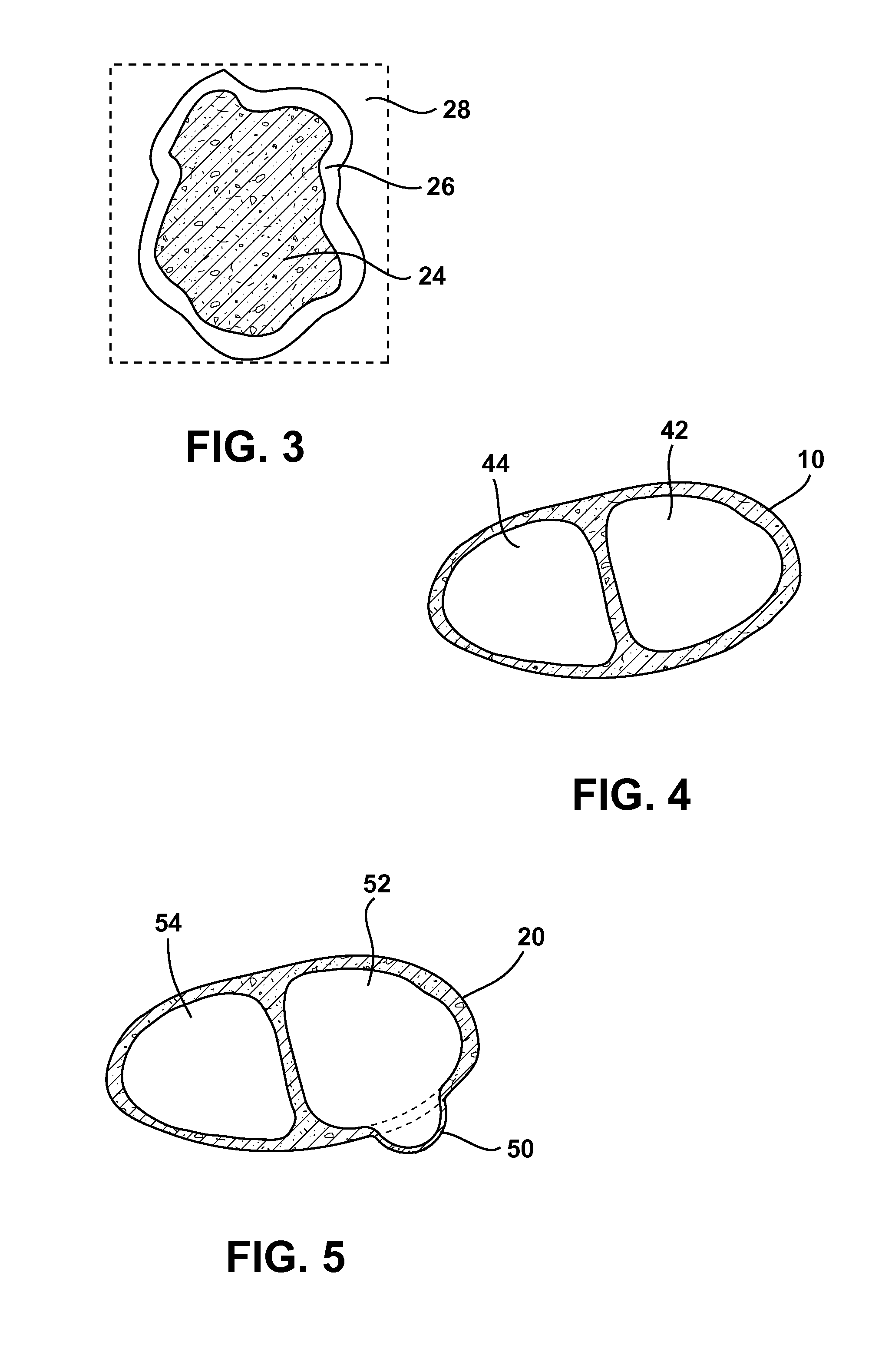Methods and Systems for Treating Injured Cardiac Tissue
a technology of cardiac tissue and system, applied in the direction of heart stimulators, prostheses, therapy, etc., can solve the problems of clinical heart failure and associated symptoms, affecting other physiological systems, and progressively deteriorating cardiac function, so as to facilitate greater mechanical and/or biological support, prevent ventricular remodeling, and facilitate greater composition distribution
- Summary
- Abstract
- Description
- Claims
- Application Information
AI Technical Summary
Benefits of technology
Problems solved by technology
Method used
Image
Examples
examples
[0223] Experiments have been conducted in laboratory conditions testing the methods and devices of the present invention disclosed herein. These include in vitro studies (described in Examples 1 and 2) in vivo studies conducted in healthy porcine tissue (Examples 3 and 4) and in vivo studies conducted in injured ovine tissue (Example 5).
example no.1
Example No. 1
[0224] Various compositions of the components for APG were tested in vitro using human blood, porcine blood, and ovine blood. One composition involved the extraction of 6 mL of PRP from 60 mL of whole blood (52.5 mL whole blood+7.5 mL anticoagulent [ACD-A, Anticoagulant Citrate Dextrose Solution A, comprising citric acid, sodium citrate and dextrose]). This PRP was combined approximately 10:1 (vol:vol) with bovine thrombin (1000 U / mL stock in 10% CaCl2), such that mixing occured only in the targeted tissue. This was the composition tested in vivo as described below.
example no.2
Example No. 2:
[0225] The ability of fibrinogen to affect the gelling and / or physical properties of autologous platelet gel (APG) was directly tested in vitro. PRP and PPP were prepared from fresh sheep blood using the Medtronic Magellan® Platelet Separator. Autologous fibrinogen was further extracted from the resulting PPP using an ethanol precipitation method. Alternative methods such as cryoprecipitation can be used for isolation of fibrinogen. The precipitated fibrinogen was re-suspended in PRP to generate autologous fibrinogen-fortified PRP (AFFPRP). Two preparations of APG were compared from the same animal—(1) conventional APG made from PRP+1000 U / ml bovine thrombin in a 10:1 ratio and (2) fibrinogen-fortified APG made from AFFPRP+1000 U / ml bovine thrombin in a 10:1 ratio. The fibrinogen-fortified APG was noticeably firmer / harder than the conventional APG generated from the same animal's blood. This confirms the utility of fibrinogen to augment the mechanical properties of APG...
PUM
 Login to View More
Login to View More Abstract
Description
Claims
Application Information
 Login to View More
Login to View More - R&D
- Intellectual Property
- Life Sciences
- Materials
- Tech Scout
- Unparalleled Data Quality
- Higher Quality Content
- 60% Fewer Hallucinations
Browse by: Latest US Patents, China's latest patents, Technical Efficacy Thesaurus, Application Domain, Technology Topic, Popular Technical Reports.
© 2025 PatSnap. All rights reserved.Legal|Privacy policy|Modern Slavery Act Transparency Statement|Sitemap|About US| Contact US: help@patsnap.com



